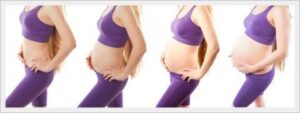Prenatal and Physical Therapy
Giving birth is a life changing experience. From a physical standpoint, childbirth has a significant impact on a woman’s body. Symptoms can vary greatly, and range from pain and headaches to tightness and incontinence.
Aches and pains are common during pregnancy and breast feeding. Discomfort can occur in the neck, lower back, pelvis and hips. However, there is good news. The right exercises, combined with postural modifications go a long way in increasing comfort. Correct planning during pregnancy helps with injury prevention and recovery after childbirth. Prenatal care includes preventive and diagnostic measures to facilitate a healthy lifestyle for the mother and child. It involves blood pressure monitoring, pelvic exams, blood and urine tests and fetal heart rate monitoring. Postpartum weight gain is a common concern, and physical therapy (combined with healthy nutrition) plays an important role in gradual, progressive weight loss.
Physical Therapy for Mommy and Baby
Here are some of the ways that physical therapy helps during and after pregnancy:
1. Breathing exercises
During pregnancy, the enlargement of the uterus puts a great deal of pressure on the diaphragm, an important muscle that assists breathing. As the tone of the muscle is reduced following pregnancy, it is essential to perform exercises to maintain and restore strength. Physical therapists train patients with different breathing exercises to improve diaphragmatic muscle tone.
2. Core stability exercises
The stretching of the abdominal muscles associated with pregnancy results in a significant reduction in muscle tone and strength. This can increase the risk of abdominal hernias. Gentle, progressive exercises to improve balance between the abdominal, oblique and lower back muscles are achieved with a pre and postnatal physical therapy program. This also helps prevent and treat low back pain.
3. Pelvic floor strengthening
Childbirth places a tremendous amount of stress on the pelvic floor muscles. This can result in pain, discomfort and embarrassing conditions like incontinence. Kegel exercises and yoga are popular ways to improve strength and control in the muscles of the pelvic floor. The patient will start with simple isometric (no movement) exercises to progressive exercises involving movement and weight bearing.
4. Manual techniques
Physical therapists can use a variety of techniques including myofascial release, manual therapy and various soft tissue mobilizations to reduce pain, restore mobility and even mobilize scar tissue.
In addition to these methods, physical therapists use modalities to reduce pain and promote healing, recommend abdominal braces for added stability and prescribe home exercise programs to help mommy recover as quickly as possible. After all, the mother needs to be healthy and happy to be able to look after the new baby!

